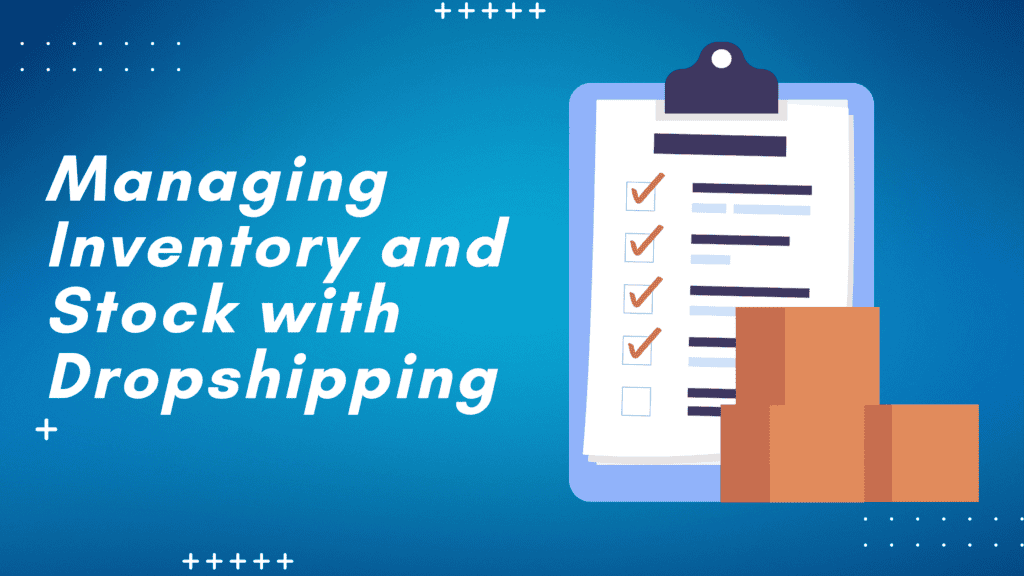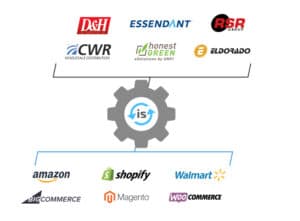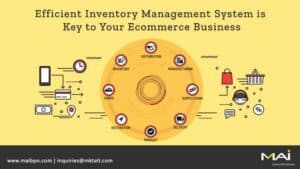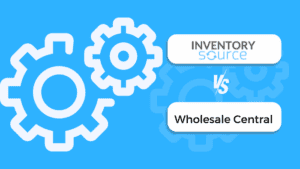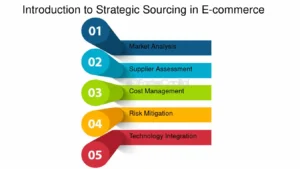Getting Started with Inventory Source for Efficient Dropshipping
Master Inventory Source’s features to set up an efficient dropshipping business with automated inventory syncing, order routing, and supplier integrations.
Introduction
For e-commerce businesses diving into dropshipping, Inventory Source offers a valuable suite of tools designed to automate time-consuming tasks, allowing business owners to focus on growth rather than logistics. This guide will walk you through the process of setting up Inventory Source and getting started with its core features, ensuring that you can manage suppliers, inventory, and orders seamlessly.
Step 1: Setting Up Your Inventory Source Account
The first step in leveraging Inventory Source’s capabilities is creating an account and selecting a plan that fits your business needs.
Choosing the Right Plan
Inventory Source offers various plans depending on your automation needs.
- Inventory Automation Plan: Ideal if you need basic inventory sync without order automation.
- Full Automation Plan: Includes both inventory and order automation, allowing for hands-off management.
- Free Directory Access: Allows browsing suppliers and products without automation features.
Summary: Selecting the right plan ensures you have access to the features necessary for efficient dropshipping.
Creating Your Account
- Sign Up: Register on Inventory Source’s website, providing basic business details.
- Set Up Payment Information: Choose your plan and enter billing details to activate automation features.
- Explore the Dashboard: Familiarize yourself with the main interface, where you’ll manage suppliers, inventory, and orders.
Benefit: A well-organized setup paves the way for seamless operations and full control over dropshipping functions.
Step 2: Selecting and Integrating Suppliers
Inventory Source allows access to a wide network of suppliers, enabling you to diversify your product offerings.
Exploring the Supplier Directory
Inventory Source’s pre-integrated supplier directory includes over 200 suppliers across various product categories.
- Search by Category: Filter suppliers by categories like electronics, apparel, or home goods.
- Product Selection: Review product catalogs for each supplier to identify items that align with your niche.
- Global and U.S. Suppliers: Choose suppliers based on their location and shipping times, focusing on U.S.-based options for faster delivery or international for a broader selection.
Benefit: Access to a diverse supplier network makes it easy to find products that meet your business needs without extensive setup.
Custom Supplier Integration
If your preferred suppliers aren’t in the directory, Inventory Source offers custom integration services.
- Work with Inventory Source Support: Contact support to assist in setting up a custom integration.
- Data Standardization: Ensure supplier data is formatted correctly to match your store requirements.
Benefit: Custom integrations allow flexibility, enabling you to work with any supplier of your choice.
Step 3: Setting Up Inventory Sync and Pricing Rules
Keeping inventory and pricing up to date is essential for accurate listings and profitability.
Configuring Inventory Sync
Inventory Source allows you to automate inventory updates, ensuring accurate stock levels.
- Set Sync Frequency: Choose update intervals (hourly, daily, etc.) based on the product and supplier.
- Customize Settings: Decide if all products or only selected items should sync automatically.
Benefit: Real-time inventory updates prevent stockouts and maintain accurate availability in your store.
Setting Pricing Automation
Establish pricing rules to protect your profit margins.
- Markup Settings: Apply percentage or fixed-dollar markups to supplier costs.
- Dynamic Pricing: Enable price adjustments based on stock levels or sales trends.
- Discounts for Promotions: Use automated pricing adjustments to offer sales or discounts for specific events.
Benefit: Pricing automation ensures consistent margins without constant oversight, allowing for greater control over profitability.
Step 4: Automating Order Fulfillment
Inventory Source streamlines order fulfillment, saving time and reducing the chance of errors.
Setting Up Order Routing
Inventory Source’s order routing automatically directs orders to the appropriate suppliers.
- Define Routing Rules: Set parameters to determine which supplier receives each order based on location, stock availability, or other criteria.
- Split Orders: Manage orders containing products from multiple suppliers, ensuring efficient and timely fulfillment.
Benefit: Automated order routing reduces manual work and minimizes the potential for errors.
Shipment Tracking Integration
Inventory Source provides automatic tracking updates, enhancing the post-purchase experience for customers.
- Real-Time Tracking Updates: Automatically sends shipment information to customers once an order is dispatched.
- Centralized Monitoring: Track the status of all shipments from a single dashboard.
Benefit: Transparent tracking builds customer trust and improves satisfaction by keeping customers informed about their order status.
Table: Getting Started with Inventory Source – Key Steps and Benefits
| Step | Description | Primary Benefit |
|---|---|---|
| Account Setup | Register, choose a plan, and set up payment | Access necessary automation features |
| Supplier Selection | Browse the supplier directory or request custom integration | Diverse product selection |
| Inventory Sync | Set automated inventory update frequency | Prevents stockouts and inaccurate listings |
| Pricing Rules | Configure markup settings and dynamic pricing | Ensures consistent profit margins |
| Order Routing and Fulfillment | Set up automatic order routing and tracking | Streamlines fulfillment and reduces errors |
Note: Following these steps optimizes your dropshipping setup and leverages Inventory Source’s automation capabilities fully.
Step 5: Monitoring Performance and Adjusting Settings
Regularly reviewing your performance data is crucial to optimizing your Inventory Source setup.
Using Inventory Source Analytics
Inventory Source’s dashboard provides insights into stock levels, sales trends, and supplier performance.
- Stock Analysis: Monitor stock turnover and identify high-demand items.
- Order Analysis: Track order volume, fulfillment speed, and customer satisfaction.
- Profitability Reports: Review sales data and margins to refine pricing and product selection.
Benefit: Data-driven insights allow you to fine-tune your inventory and fulfillment strategy, maximizing growth potential.
Custom Alerts and Notifications
Set up alerts to stay on top of critical inventory and order status updates.
- Low Stock Alerts: Get notified when inventory levels fall below a certain threshold.
- Price Change Alerts: Be alerted when suppliers adjust their prices, enabling quick reaction.
- Order Status Notifications: Receive updates on delayed or failed orders for prompt resolution.
Benefit: Custom notifications help you stay proactive, ensuring you never miss important updates.
Conclusion
Getting started with Inventory Source equips e-commerce businesses with the tools needed to automate and optimize dropshipping. From setting up suppliers and inventory sync to automating order routing and tracking, Inventory Source enables businesses to run efficiently with minimal manual intervention. With a structured approach to setup and regular performance reviews, Inventory Source can significantly simplify your dropshipping journey, making it easier to scale and satisfy your customers.
FAQs
1. Can I use Inventory Source for international suppliers?
Yes, Inventory Source offers both U.S. and international suppliers, allowing businesses to cater to different markets and shipping preferences.
2. How does Inventory Source handle multiple suppliers for a single order?
Inventory Source supports split orders, automatically routing items from different suppliers as necessary.
3. Do I need to manually update pricing?
No, Inventory Source allows for automated price updates and customizable markup rules to ensure consistent profit margins.
4. How frequently does Inventory Source sync inventory?
Inventory sync frequency is customizable, with options for hourly, daily, or weekly updates based on your needs.
5. Does Inventory Source provide shipment tracking?
Yes, Inventory Source integrates tracking information, automatically updating customers when their order ships.
6. Can I run promotions with Inventory Source?
Yes, you can set up pricing rules to automate sales and discount events, making promotions easy to manage.
7. How does Inventory Source compare to similar platforms?
Inventory Source stands out for its extensive supplier network, customizable integrations, and robust automation features, making it a strong choice for serious dropshippers.
Top Tools for Setting Up a Successful Dropshipping Business
Boost your dropshipping operations with these top e-commerce tools:
Inventory Source
Automates supplier management, inventory sync, and order routing for streamlined dropshipping.
Spocket
Offers a network of U.S. and EU suppliers, ensuring fast shipping and quality products.
Oberlo
Ideal for Shopify-based stores, simplifying product import and order automation.
AliDropship
Automates dropshipping with AliExpress for WooCommerce and Shopify users.
Printful
A print-on-demand service offering custom products, ideal for personalized merchandise.
Keywords: getting started with Inventory Source, dropshipping setup, supplier integration, inventory automation, order fulfillment, real-time updates, e-commerce tools, Inventory Source guide

